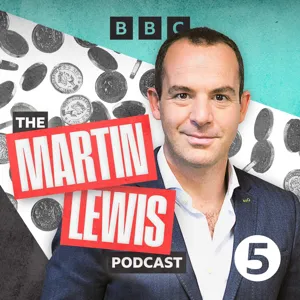Podcast Summary
Exploring the Future of Music Generation with AI: AI-driven music generation is gaining traction, offering users the ability to create various music styles, lyrics, and even vocals. The trend continues with text, image, chat, and video content, potentially leading to voice cloning for personalized songs. However, the impact on the music creation landscape remains to be seen.
We are witnessing an exciting time in content creation as advancements in AI technology continue to empower individuals to generate various forms of media. Music generation, specifically, is gaining popularity through models like Suno and Yu Dio from OpenAI, which allow users to specify the type of music they want and even generate lyrics and vocals. This follows the trend of text-based, image-based, chat-based, and video-based content waves. The future could hold even more possibilities, such as voice cloning for generating personalized songs. However, it's essential to consider the ratio of consumers to creators in media platforms and ponder whether the ease of creating good music will significantly increase the number of people engaging in music creation.
Growing demand for localized and smaller language models on edge devices: Apple's entry into smaller language models signals potential shift towards local interfaces, enabling new consumer experiences and potentially more integrated user experiences on devices, but the extent of dependence on specific OS companies versus a broader ecosystem is uncertain.
There's a growing demand for localized and smaller language models (OLMs) that can fit on edge devices, offering lower latency and enabling new consumer experiences. Apple's recent entry into this space with smaller models signals a potential shift towards local interfaces for running models within their ecosystem. This could lead to more integrated and standardized user experiences on devices, although the extent of this dependence on specific OS companies versus a broader ecosystem remains uncertain. The success of vertical SaaS companies like Veeva, built on top of larger platforms, shows that even breakout successes can lead to eventual integration into the platform itself.
The Evolution of Veeva from a Third-Party App to a Significant Part of Salesforce: Historically, third-party apps can become part of larger platforms, as seen with Veeva's integration into Salesforce. Understanding the capabilities of device-resident vs cloud-based resources is crucial for building effective apps and products.
Companies often start as third-party applications on top of larger platforms but can eventually be subsumed by or become part of the larger platform. This was the case with Veeva, which focused on compliance workflows for selling to doctors in the life sciences industry, a vertical that Salesforce didn't have significant expertise in. Veeva became a significant part of Salesforce, worth about 20% of its market cap. Another takeaway is the limitations of small models in AI. There are certain capabilities that can be device-resident, such as reasoning and some synthesis abilities, but larger knowledge bases or complex tasks may require access to the cloud. As device capabilities expand, the line between what can be done on device and what requires cloud access will continue to shift. Additionally, there's a historical precedent for third-party applications being integrated into larger platforms. For example, Microsoft Office started as separate applications from companies like Lotus and eventually became part of Microsoft's distribution platform. The question of what capabilities can be device-resident versus cloud-based is an important one for building apps and products. Understanding these limitations can help developers determine what can be done on device and what requires access to larger cloud-based resources.
Integration of AI into Hardware: New Possibilities for Innovation: The integration of AI into hardware will involve a combination of devices and cloud-based models, with new form factors and capabilities like vision emerging in specific applications. The launch of meta AI as a standalone product showcases the potential for seamless integration into various services and applications.
The integration of AI technology into hardware will vary greatly depending on the application and the capabilities required. The distribution of compute will likely involve a combination of devices and cloud-based models. New form factors, such as passive devices for data collection, may emerge as interesting areas for consumer-focused AI hardware. The use of new capabilities, like vision, will depend on the specific application and the circumstances in which the data will be used. The launch of meta AI as a standalone product shows potential for integrating AI into various services and platforms, potentially including chatbots or other interactive services. Overall, the integration of AI into hardware and software will continue to evolve and offer new possibilities for innovation. I was particularly impressed by the meta AI product launch, which showcased the potential for seamless integration of AI into various services and applications. The one-click animation feature was a standout feature that my kids enjoyed using across different platforms. While it's unclear what meta's plans are for integrating the product into their existing surfaces, the potential for encapsulating meta.ai as just another line item or account in chat or other properties they own is intriguing. The future of AI technology will continue to bring unexpected applications and new possibilities for innovation.
Meta's push for advanced AI models and efficiency: Meta's investment in training larger models shows performance improvements, but efficiency, creativity, and architectural approach remain debated. Data and compute platform providers are hosting models from various players, blurring competition lines, and the long-term capital scale question arises for smaller players.
The race for advanced AI models and efficient inference is heating up, with large tech firms like Meta pushing the boundaries of model training and efficiency. Meta's investment in training models beyond supposedly optimal points has shown improvements in performance, but the importance of efficiency, creativity, and architectural approach for various use cases remains debated. Meanwhile, the landscape of competition is becoming increasingly blended as data and compute platform providers like Snowflake and Databricks host models from various players, including their own. It's unclear if these platforms need to own the models or just demonstrate expertise in training, fine-tuning, and deploying them. However, the long-term capital scale question arises as to how long these other players can keep up with the hyperscalers' investments in building bigger and bigger models. Focusing on medium to small, more specialized use cases and providing efficient inference platforms may be a viable alternative for these players.
Hyperscalers investing $200B in AI technology: Hyperscalers invest massive resources in AI, comparable to oil majors and broadband providers, with belief in future ROI as technology scales and becomes more intelligent and applicable.
A select few companies and entities, particularly the hyperscalers, are investing massive amounts of resources, approaching $200 billion collectively this year, towards the development of AI technology. This investment is comparable to that of industries like oil majors and broadband providers. The belief is that the ROI from these investments will come later as AI scales and becomes more intelligent and applicable to various industries and applications. The hyperscalers' commitment to this investment is significant, and sovereigns may also contribute to the immense scale in the long run by customizing models specific to their regions or cultures. Companies like Magic, which has a long context window, have already begun this trend with large context windows of 5 million tokens or more. This investment in AI is notable for its scale and the belief in its potential future impact.
Revolutionizing fields with larger context windows in AI: Larger context windows in AI are set to revolutionize various fields, particularly in biology, but come with new energy consumption challenges, requiring the construction of large-scale energy infrastructure
The use of larger context windows in AI is set to revolutionize various fields, much like how advancements in microprocessors and bandwidth transformed technology in the late 90s. This shift will be significant and long-lasting, particularly in areas like biology, where larger context windows have already shown promising results in protein folding. However, this progress comes with new challenges, specifically regarding energy consumption. As data centers continue to grow in size and power requirements, energy constraints may become a limiting factor. The construction of large-scale energy infrastructure, such as 500 megawatt or gigawatt data centers, will be necessary to keep up with the energy demands of AI development. This shift from solely software engineering challenges to physical world constraints, including permitting and infrastructure development, will slow down the pace of innovation but is a necessary step in the continued advancement of AI technology.
Physical limitations in AI development: Data wall and energy consumption: The physical limitations of AI development include the data wall and energy consumption. Microsoft's investment in Abu Dhabi highlights the need for energy-efficient AI data centers. Historical infrastructure investments provide context for the economic impact of energy and AI.
The advancement of AI technology faces both computational and physical limitations. The physical limitations include the challenges of increasing energy consumption and data availability. The concept of a "data wall" refers to the limited number of cheap data tokens available on the internet, necessitating the collection of more data or the generation of synthetic data. The energy consumption required for AI development is significant, and the location of new AI data centers near energy sources, such as Microsoft's investment in Abu Dhabi, highlights this issue. The scarcity of energy resources in the past, like nuclear power, could have led to greater capabilities but was hindered by policy decisions. The adoption of solutions to these challenges is crucial, and the intersection of energy and AI could be a game-changer. Additionally, the geopolitical implications of energy dependency on AI are significant, with potential consequences for global power dynamics. The discussion also touched upon the historical significance of infrastructure investments, such as hat making, and their economic impact.
Support the No Priorities Podcast with a donation for exclusive merchandise: Donate $100 to the No Priorities Podcast to receive a branded bottle of tequila or mocktail and a cool hat as a thank you gift
The No Priorities podcast is offering a branded bottle of tequila or mocktail and a cool hat for a $100 donation. You can find them on Twitter @nopriorispod, subscribe to their YouTube channel, and listen on Apple Podcasts, Spotify, or any other podcast platform for a new episode every week. Don't forget to sign up for emails or check out transcripts on their website, nodashpriors.com. This is a unique opportunity to support the podcast and receive some exclusive merchandise in return. So, if you're a fan of the show, consider making a donation and becoming a part of the No Priorities community.



